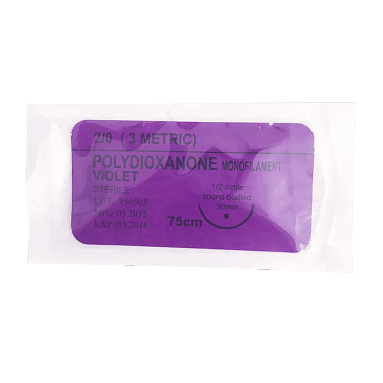As a dental professional, you know that creating accurate impressions is essential for creating successful restorations. Alginate impression material is a popular choice for taking dental impressions, but what exactly is it, and how does it work? In this guide, we’ll cover everything you need to know about alginate impression material, including its advantages and disadvantages, how to prepare it, and common mistakes to avoid.
Introduction to Alginate Impression Material
Alginate impression material is a type of molding powder that is commonly used in dentistry to take impressions of teeth and oral tissues. It is an elastic, irreversible hydrocolloid that sets by a chemical reaction between calcium ions and sodium alginate. Alginate molding powder is made from seaweed and contains sodium alginate, calcium sulfate, and other ingredients. It is available in various viscosities, which determine the flow properties of the material.
Alginate impression material is an affordable and easy-to-use option for taking accurate dental impressions. It is commonly used for diagnostic casts, study models, and preliminary impressions for crown and bridge work. Alginate impression material is also used in orthodontics to make impressions for retainers and other appliances.
What is Alginate Impression Material?
Alginate impression material is a hydrocolloid that is made from seaweed. It is a powder that is mixed with water to create a viscous, gel-like substance that is used to take impressions of teeth and oral tissues. Alginate impression material is available in different viscosities, which determine the flow properties of the material. Lower-viscosity alginate impression material is more fluid and is used for taking impressions of the full arch, while higher-viscosity material is used for taking impressions of individual teeth.
Alginate impression material is a popular choice for taking dental impressions because it is easy to use, affordable, and produces accurate results. It is also safe for patients and does not require any special equipment or training to use.
Different Types of Alginate Impression Material
There are several different types of alginate impression material available on the market. These include:
Regular Set Alginate Impression Material
Regular set alginate impression material sets in 2-3 minutes and is commonly used for making impressions of the full arch.
Fast Set Alginate Impression Material
Fast set alginate impression material sets in 1-2 minutes and is commonly used for making impressions of individual teeth.
Color-Changing Alginate Impression Material
Color-changing alginate impression material changes color when it is mixed, which can help ensure that it is mixed properly. This type of alginate impression material is available in both regular and fast set varieties.
Dustless Alginate Impression Material
Dustless alginate impression material is formulated to produce less dust when it is mixed, which can be beneficial for patients who are sensitive to airborne particles.
Flavored Alginate Impression Material
Flavored alginate impression material is available in a variety of flavors, including mint, grape, and cherry. This can help make the impression process more comfortable for patients who may be sensitive to the taste of the material.
How Alginate Impression Material Works?
Alginate impression material works by mixing the powder with water to create a viscous, gel-like substance that is used to take impressions of teeth and oral tissues. The material sets by a chemical reaction between calcium ions and sodium alginate, which creates a gel that is elastic and irreversible.
To use alginate impression material, the powder is first mixed with water to create a smooth, homogeneous mixture. The mixture is then placed into a tray and inserted into the patient’s mouth. The material is allowed to set for a specified period of time, after which the tray is removed, and the impression is ready to be poured.
Alginate impression material is easy to use and produces accurate results, but it does have some limitations. It is not as accurate as other types of impression material, such as polyvinyl siloxane, and it is not suitable for use in high-precision restorations.
Advantages of Using Alginate Impression Material
There are several advantages to using alginate impression material for taking dental impressions. These include:
Asequibilidad
Alginate impression material is an affordable option for taking dental impressions. It is much less expensive than other types of impression material, such as polyvinyl siloxane.
Facilidad de uso
Alginate impression material is easy to use and does not require any special equipment or training. It is a straightforward process that can be performed by dental assistants or other members of the dental team.
Patient Comfort
Alginate impression material is generally well-tolerated by patients and does not cause any discomfort or pain during the impression process. It is also safe and does not pose any health risks to patients.
Versatility
Alginate impression material is versatile and can be used for a variety of applications, including diagnostic casts, study models, and preliminary impressions for crown and bridge work.
Disadvantages of Using Alginate Impression Material
While there are many advantages to using alginate impression material, there are also some disadvantages. These include:
Limited Accuracy
Alginate impression material is not as accurate as other types of impression material, such as polyvinyl siloxane. It is not suitable for use in high-precision restorations or for creating highly detailed impressions.
Short Working Time
Alginate impression material sets quickly, which can limit the amount of time that the dentist has to take the impression. This can be a challenge for dentists who are not experienced in using the material.
Limited Shelf Life
Alginate impression material has a limited shelf life and must be used within a certain period of time after it is opened. This can be a challenge for dental practices that do not use the material frequently.
Limited Reusability
Alginate impression material cannot be reused, which can be a disadvantage for dental practices that are focused on sustainability and reducing waste.
How to Prepare Alginate Impression Material
Preparing alginate impression material is a straightforward process that involves mixing the powder with water. The exact mixing ratio will depend on the type of alginate impression material that you are using, as well as the manufacturer’s instructions. In general, the mixing ratio is 1 part powder to 1 part water by volume.
To prepare alginate impression material, follow these steps:
- Measure out the appropriate amount of powder and water.
- Mix the powder and water together using a spatula or mixing bowl.
- Continue mixing until the mixture is smooth and homogeneous.
- Transfer the mixture to a tray and insert it into the patient’s mouth.
Tips for Using Alginate Impression Material
Here are some tips for using alginate impression material:
Use the Right Mixing Ratio
Make sure to follow the manufacturer’s instructions for the correct mixing ratio. Using too much or too little water can result in a poor-quality impression.
Mix Thoroughly
Thorough mixing is essential for creating a smooth, homogeneous mixture. Make sure to mix the powder and water together until the mixture is completely smooth.
Work Quickly
Alginate impression material sets quickly, so it is important to work efficiently to ensure that the impression is taken before the material sets.
Use the Correct Tray Size
Using the correct tray size is important for ensuring that the impression is accurate. Make sure to choose a tray that is the correct size and shape for the patient’s mouth.
Remove Excess Material
After the impression is taken, make sure to remove any excess material from the tray to ensure that the impression is accurate.
Common Mistakes to Avoid When Using Alginate Impression Material
Here are some common mistakes to avoid when using alginate impression material:
Using the Wrong Mixing Ratio
Using the wrong mixing ratio can result in a poor-quality impression. Make sure to follow the manufacturer’s instructions for the correct mixing ratio.
Not Mixing Thoroughly
Thorough mixing is essential for creating a smooth, homogeneous mixture. Make sure to mix the powder and water together until the mixture is completely smooth.
Not Working Quickly Enough
Alginate impression material sets quickly, so it is important to work efficiently to ensure that the impression is taken before the material sets.
Using the Wrong Tray Size
Using the wrong tray size can result in an inaccurate impression. Make sure to choose a tray that is the correct size and shape for the patient’s mouth.
Not Removing Excess Material
Leaving excess material in the tray can result in an inaccurate impression. Make sure to remove any excess material from the tray after the impression is taken.
Storage and Shelf Life of Alginate Impression Material
Alginate impression material has a limited shelf life and must be used within a certain period of time after it is opened. The exact shelf life will depend on the manufacturer and the type of alginate impression material that you are using. In general, most alginate impression materials have a shelf life of 1-2 years.
To prolong the shelf life of alginate impression material, it should be stored in a cool, dry place and kept away from direct sunlight. Once the material has been opened, it should be stored in an airtight container to prevent moisture from affecting the quality of the material.
Alternatives to Alginate Impression Material
While alginate impression material is a popular choice for taking dental impressions, there are several alternatives that may be more suitable for certain applications. These include:
Polyvinyl Siloxane
Polyvinyl siloxane is a type of impression material that is more accurate than alginate. It is commonly used for high-precision restorations, such as crowns and bridges.
Polyether
Polyether is another type of impression material that is more accurate than alginate. It is commonly used for high-precision restorations, such as crowns and bridges.
Digital Impressions
Digital impressions use a scanner to create a three-dimensional image of the teeth and oral tissues. They are highly accurate and can be used for a variety of applications, including crowns, bridges, and implants.
Conclusion: Is Alginate Impression Material Right for You?
Alginate impression material is an affordable and easy-to-use option for taking dental impressions. It produces accurate results and is generally well-tolerated by patients. However, it does have some limitations, including limited accuracy and a short working time.
If you are looking for a more accurate impression material, or if you are focused on sustainability and reducing waste, you may want to consider alternatives to alginate impression material, such as polyvinyl siloxane or digital impressions.
Overall, the choice of impression material will depend on your specific needs and preferences. Talk to your dental supplier or manufacturer for more information on the different types of impression material available and which one is right for your practice.



